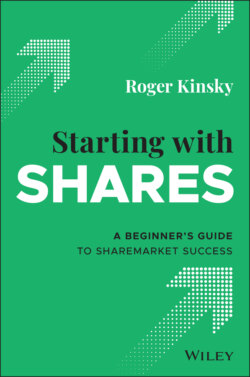Читать книгу Starting With Shares - Roger Kinsky - Страница 36
Other ways of becoming a shareholder
ОглавлениеYou can become a shareholder in other ways than the two already mentioned. Some of these are:
Inheritance: When a shareholder dies, the shares they own form part of their estate and will eventually be transferred to one or more of their beneficiaries. If you're one of those beneficiaries, the executors will arrange transfer of the shares into your name.
Private treaty: As with any other commodity, transfer of share ownership can be arranged by direct negotiation between buyer and seller. In Australia, several thousand different shares are tradeable, not to mention the rest of the world, so it's generally not feasible to negotiate trades by private treaty (although some really large share transfers are negotiated this way).
Privatisation: When the government decides to offload an asset, they usually do so by issuing shares. For example, Commonwealth Bank, Commonwealth Serum Laboratories, Qantas and Telstra were made available for public ownership in this way. Many Australians became shareholders by subscribing to the shares when they were first made available for purchase.
Structure change: Many Australians became shareholders when mutual companies and friendly societies changed structure and became public companies. This was the case with many insurance companies and co‐operative building societies.
Takeovers, mergers and splits: Another way of becoming a shareholder in a listed company is through a takeover, merger or split. For example, the Bank of NSW was taken over by Westpac and the Sydney Futures Exchange merged with the ASX. In the opposite type of scenario, Coles Ltd became a listed company when Wesfarmers decided to get out of the grocery retailing business and make Coles a separate company (and no longer part of Wesfarmers).
